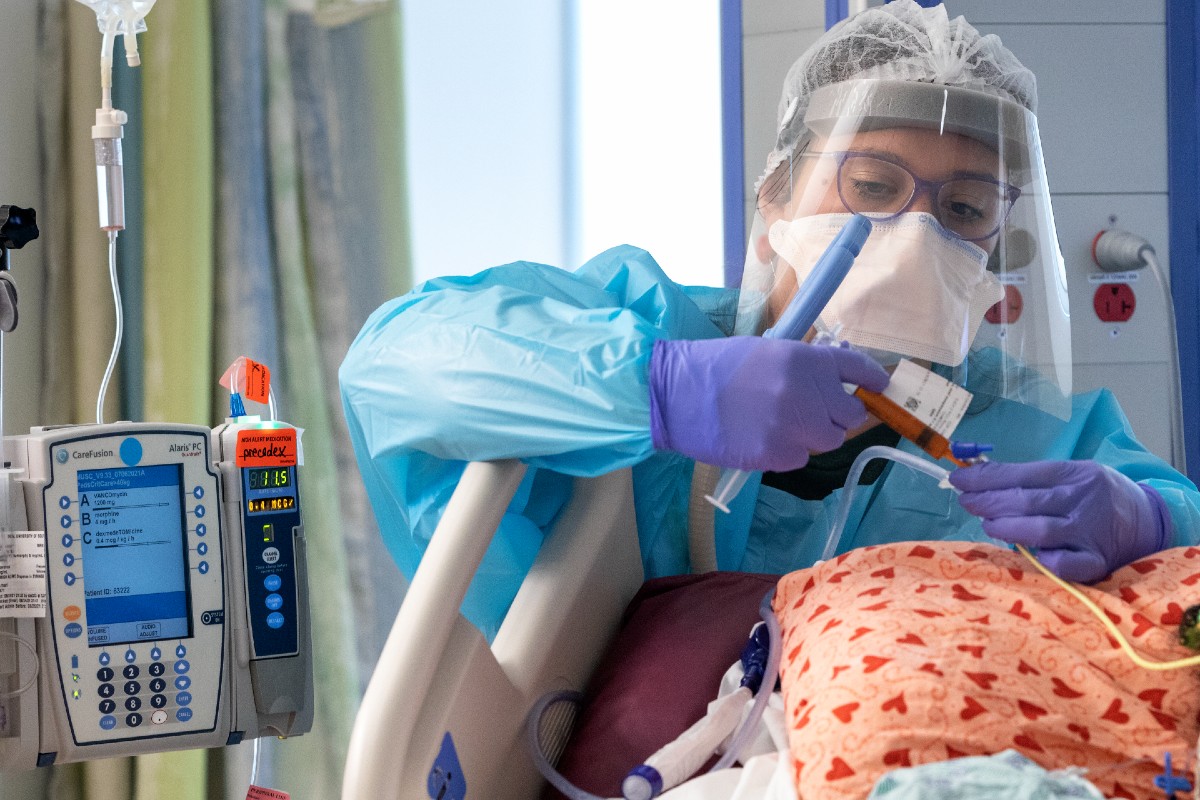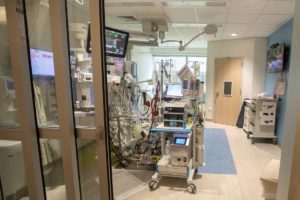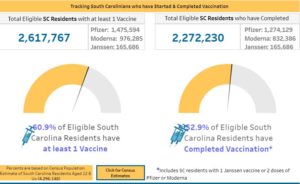
By Andy Brack, editor and publisher | More South Carolina children have or have had COVID-19 than just about anywhere else in the nation, according to two reports.
- An Oct. 4 Washington Post analysis showed South Carolina as having the highest state childhood infection rate, based on Sept. 11 data from the Centers for Disease Control. A chilling chart that compares the infection rate per 100,000 children with vaccination rate shows the Palmetto State as a huge outlier. (See chart.)
- Meanwhile, a Sept. 30 report of state health data showed South Carolina had the second highest total rate of COVID-19 cases among children — 14,996.2 per 100,000 children — of any state other than Tennessee. (See Appendix 3B of the report by the American Association of Pediatrics and Children’s Hospital Association.)
While interpreting data sometimes can be messy, health experts say the bottom line is clear: More kids are getting COVID-19 in South Carolina than other places.
“We do know that South Carolina has seen an increase in pediatric COVID cases and hospitalizations, and that is obviously concerning,” said Derrek Asberry, a spokesman with the S.C. Department of Health and Environmental Control (DHEC). “We strongly encourage everyone ages 12 and up to get vaccinated as soon as possible if you have not already done so.”
What’s behind it all?
Doctors say South Carolina’s numbers are high and the disease is rampant because of a multitude of factors. But if more isn’t done, it’s not going to get better soon.

Dr. Allison Eckard, head of the Medical University of South Carolina’s Division of Pediatric Infectious Diseases, points to three things that make South Carolina a blooming petri dish for the virus — low vaccination rates, complacency and masking policies.
“It has been this trifecta of a low [statewide] vaccination rate as well as people are ‘over’ the idea that COVID is a big deal and, ‘Why should I avoid parties and sleepovers and wear a mask?’ When you combine that with the delta variant, it has spread like wildfire here.”
Eckard added that confusion and controversy about school masking policies haven’t helped in curbing the illness among youths, who returned to school in August as the delta variant surged.
“There is a large group of anti-mask parents in South Carolina who are very aggressive and have frightened many people into submission,” she said.
Earlier this week, a federal appellate judge denied state Attorney General Alan Wilson’s request that South Carolina’s law prohibiting school mask mandates be allowed to take effect.
More numbers
There are a lot of numbers that indicate how big of a problem South Carolina has with COVID-19 among children.

Cases. Almost a quarter of the 872,011 reported cases in South Carolina involve residents under age 21. About 8 percent (67,282) are children who are 10 and under; while 15.4 percent (134,245) are those from 11 to 20, according to the DHEC.
Hospitalizations. Fewer than 700 children under 20 have had to be hospitalized in South Carolina for COVID compared to up to 10 times that number for residents in their 60s, 70s and 80s, according to DHEC. But Eckard says she can tell it’s getting worse for kids. From March 2020 to July, 98 kids were admitted to MUSC for the virus and all but two received traditional treatment. But in August and September, the hospital admitted 74 children, 14 of whom required ventilators.
Deaths. More than 92 percent of South Carolinians who died from COVID-19 — more than 10,000 people — were older than 60, according to state health data. For kids who get the virus, the overwhelming majority bounce back, although 22 have died.
“Something in delta is making more healthy children particularly ill,” Eckart said. “We are seeing more severe cases among children.”
School impact. Health professionals say the delta variant is impacting schools more than earlier versions of the virus. In Charleston County, for example, about 2,800 students got the virus during the 2020-21 school year. But from Aug. 18 through the end of September, more than 2,300 got it, Eckart said.
Statewide since August, some 51,023 students and school staff have had to quarantine after testing positive, while 210,659 needed to isolate for coming into close contact with someone who tested positive, according to DHEC figures.
Get vaccinated, officials say

Almost 53 percent of eligible South Carolinians who can get vaccinated are fully vaccinated, according to DHEC. About 61 percent have had at least one shot.
But children between 12 and 17, who couldn’t get vaccinated until early summer, have lower rates. Some 32 percent are fully vaccinated and 41.6 percent have had at least one dose, according to the CDC. Children under 12 can’t get vaccinated yet, but one vaccine maker has asked for federal permission to provide lower-dose shots to children as young as 5.
In a press conference this week, Eckard urged parents to not believe a misconception that children without underlying conditions aren’t at risk of severe infection from COVID-19.
“You cannot always predict who is going to have the most severe type of infection.”
She emphasized the safety of the vaccine.
“Vaccination is the greatest tool in our arsenal,” she said. “I believe in science. I believe in protecting other people. I believe in the vaccine.”
DHEC’s Asberry urged people to get vaccinated.
“Vaccinations protect individuals and their loved ones, including children who are too young to get vaccinated,” he said. “We can beat this pandemic if we all come together as South Carolinians to increase our vaccination rates and mask up while indoors and in public settings.”
- Have a comment? Send to feedback@statehousereport.com


